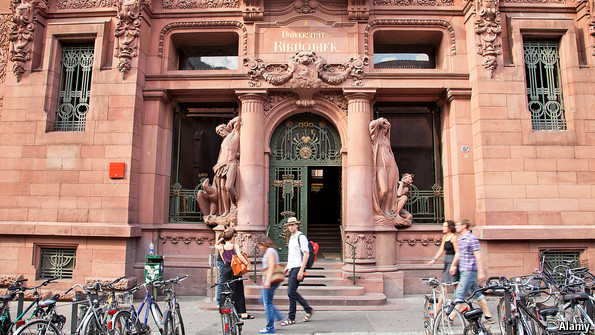Category: Education
Jack Goldsmith on Cybersecurity
A short history of mathematical pedagogy; what does the future hold?
1. Teaching Maths In 1950s
A logger sells a truckload of lumber for $100. His cost of production is 4/5 of the price. What is his profit?
2. Teaching Maths In 1970s
A logger sells a truckload of lumber for $100. His cost of production is 4/5 of the price, or $80. What is his profit?
3. Teaching Maths In 1980s
A logger sells a truckload of lumber for $100. His cost of production is $80. Did he make a profit ? Yes or No
4. Teaching Maths In 1990s
A logger sells a truckload of lumber for $100. His cost of production is $80 and his profit is $20. Your assignment: Underline the number 20.
5. Teaching Maths In 2000s
A logger cuts down a beautiful forest because he is selfish and inconsiderate and cares nothing for the habitat of animals or the preservation of our woodlands. He does this so he can make a profit of $20. What do you think of this way of making a living?
Topic for class participation after answering the question: How did the birds and squirrels feel as the logger cut down their homes? (There are no wrong answers, feel free to express your feelings e.g, anger, anxiety, inadequacy, helplessness etc.)
Should you require debriefing at conclusion of exam there are counsellors available to assist you to adjust back into the real world.
Palindromes Week – take COMP 454 in the Fall 2015 and learn everything!
A palindrome is a word or expression that reads the same forward as backward; a famous palindrome is “madam i m adam”, from James Joyce’s Ulysses. Another one is the word “racecar”. Yet another very famous one is in the title of NOVA’s “A Man, a Plan, a Canal – Panama!”. They are interested for computer scientists as they are strings with many properties (my book “An Introduction to the Analysis of Algorithms” has a section on algorithms for palindromes). But they are much more than games; nature uses them, and for example many DNA strands in our genetic code are palindromic.
In the Fall 2015 I will be teaching a course, COMP 454, that will be using palindromes as an example of many computational properties.
https://www.facebook.com/CSUChannelIslands/posts/10153225956132040
It's finals week and also Palindrome Week! pic.twitter.com/wdBSDA577C
— CSU Channel Islands (@csuci) May 12, 2015
Value of a degree
In 1972 a man with a degree aged 25-34 earned 22% more than a man without. Today, it's 70% http://t.co/9zctUNQLeQ pic.twitter.com/h4yR3F5UfI
— The Economist (@TheEconomist) March 14, 2015
German universities: Between great and so-so
A GLANCE at the global rankings of universities suggests that nothing much has changed in recent years. MIT, Stanford, Cambridge, Oxford and a few other English-speaking campuses remain at the top, fighting it out with large endowments, celebrity professors and selective entry. By contrast, universities in Germany are nowhere near the top, even after several reforms, including an “excellence initiative” since 2005. Many students waste away in overflow rooms next to packed and stuffy lecture halls. Their best hope of seeing professors is through opera glasses.
But look more closely at the rankings, and change is more evident, thinks Günther Zupanc, a biology professor who has taught in Germany, Britain and Canada and is now at Boston’s Northeastern University. Only a couple of German universities make it into the top 50: Heidelberg’s Ruprecht-Karls-University and Munich’s Ludwig-Maximilians-University usually lead the pack. Among the top 200, however, German universities have improved the most. Taken together, they have moved up by 250 places, Mr Zupanc calculates. Only Dutch universities have done better. America’s, by contrast, have crashed: since 2011 they have collectively moved down by 692 places.
via German universities: Between great and so-so | The Economist.

